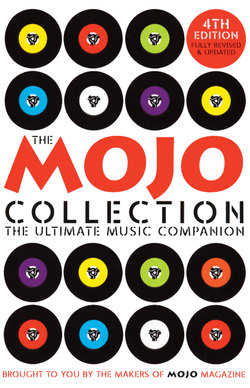Читать книгу The Mojo Collection - Various Mojo Magazine - Страница 63
The Rolling Stones Aftermath The Stones take a quantum leap beyond recycled R&B.
ОглавлениеRecord label: Decca (UK) ABKCO (US)
Produced: Andrew Loog Oldham
Recorded: RCA Studios, Hollywood; December 3–8, 1965, March 6–9, 1966
Released: April 15, 1966 (UK) June 20, 1966 (US)
Chart peaks: 1 (UK) 2 (US)
Personnel: Mick Jagger (v, p); Keith Richards (g, v); Brian Jones (g, k, sitar, dulcimer, marimba); Bill Wyman (b, pc); Charlie Watts (d, pc); Ian Stewart (p); Jack Nitzsche (k, pc); Dave Hassinger (e)
Track listing: Mother’s Little Helper (S/US); Stupid Girl; Lady Jane; Under My Thumb; Doncha Bother Me; Goin’ Home; Flight 505; High And Dry; Out Of Time; It’s Not Easy; I Am Waiting; Take It Or Leave It; Think; What To Do
Running time: 52.48
Current CD: Decca 8823242
Further listening: The next two studio albums, Between The Buttons (1967) and Their Satanic Majesties Request (1967), failed to deliver on the promise of Aftermath, as the Stones paddled up a psychedelic backwater before regaining their bearings with Beggar’s Banquet (1968).
Further reading: The Stones (Philip Norman, 1984); True Adventures Of The Rolling Stones (Stanley Booth, 2000); www.rollingstones.com (official); www.godgammeldags.nu/rolling/stones/aftermath/ (fan site)
Download: iTunes
Until Aftermath, the Stones were still largely thought of as Brit-blues recyclers of US R&B modes, although Jagger & Richards had already started to flex their compositional muscles with successes like Satisfaction and 19th Nervous Breakdown, the single which preceded the album’s release. Featuring 14 of their own songs, Aftermath was recorded towards the end of a gruelling American tour, much of the material reflecting the band’s frayed temperament in general and Mick Jagger’s growing hostility towards girlfriend Chrissie Shrimpton in particular. Tracks such as Under My Thumb, Stupid Girl and Out Of Time revealed a deep vein of misogyny that dogged the Stones’ reputation for years, while the contemptuous tone of Mother’s Little Helper suggested an attitude towards drugs that was at best ambivalent – OK if you were a rich rock star, but cause for scorn if you were a hapless housewife.
‘It was all a spin-off from our environment,’ Keith Richards explained later. ‘Hotels and too many dumb chicks. Not all dumb, by any means, but that’s how one got. You got really cut off.’
There was widespread speculation, meanwhile, regarding the inspiration for the song Lady Jane: their record label claimed it was about Henry VIII’s wife Jane Seymour, and Jagger apparently allowed both Shrimpton and toff totty Lady Jane Ormsby-Gore to believe it was about them. It turned out to be derived from Lady Chatterley’s Lover, being the gamekeeper’s term for his mistress’s vagina. Though manager Andrew Loog Oldham took the producer’s credit, the album was effectively recorded by Richards with the group’s American engineer Dave Hassinger. His job was not made any easier by Brian Jones’s unreliability, which left Keith having to play most of the guitar parts by himself. Despite his growing drug and personality problems, however, Jones’s contributions were crucial to the album’s success. The band’s most accomplished musician, he had begun seeking out new and unusual instruments to add to their sound: sitar on Mother’s Little Helper, and marimba on Under My Thumb and Out Of Time, while Lady Jane and Waiting featured the sound of a dulcimer that had been given to him by the folk singer Richard Farina.
‘Brian would be down on his back, lying around the studio with his guitar strapped around him,’ Richards told biographer Victor Bockris. ‘Then suddenly, from nine hours of lying there, he’d just walk in and lay some beautiful things down on a track (piano, harpsichord), something that nobody’d even thought of.’ Released as Aftermath after their record company rejected the ‘blasphemous’ original title Could You Walk On The Water?, the LP quickly topped the album charts in Britain.
